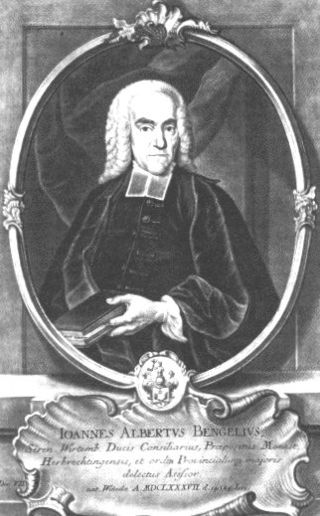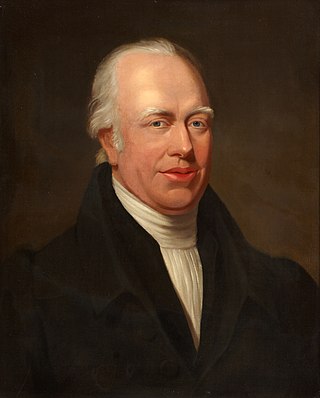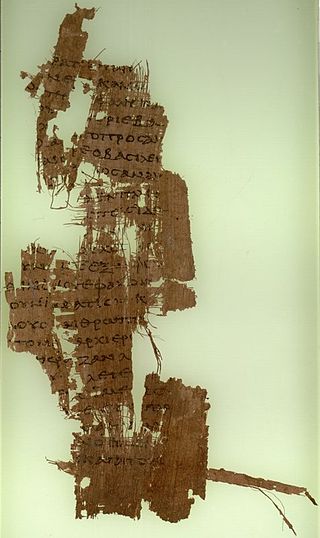Related Research Articles

The Geneva Bible is one of the most historically significant translations of the Bible into English, preceding the King James Version by 51 years. It was the primary Bible of 16th century English Protestantism and was used by William Shakespeare, Oliver Cromwell, John Knox, John Donne and others. It was one of the Bibles taken to America on the Mayflower, and its frontispiece inspired Franklin's design for the first Great Seal of the United States.
Frank Stagg was a Southern Baptist theologian, seminary professor, author, and pastor over a 50-year ministry career. He taught New Testament interpretation and Greek at New Orleans Baptist Theological Seminary from 1945 until 1964 and at the Southern Baptist Theological Seminary in Louisville, Kentucky from 1964 until 1978. His publications, recognitions and honors earned him distinction as one of the eminent theologians of the past century. Other eminent theologians have honored him as a "Teaching Prophet."
No one...has ever taken the New Testament more seriously than Frank Stagg, who spent his entire life wrestling with it, paying the price in sweat and hours in an unrelenting quest to hear the message expressed in a language no longer spoken and directed toward a cultural context so foreign to the modern reader.

Johann Albrecht Bengel, also known as Bengelius, was a Lutheran pietist clergyman and Greek-language scholar known for his edition of the Greek New Testament and his commentaries on it.

Adam Clarke was a British Methodist theologian who served three times as President of the Wesleyan Methodist Conference. A biblical scholar, he published an influential Bible commentary among other works. He was a Wesleyan.

John 1 is the first chapter in the Gospel of John in the New Testament of the Holy Bible. The author of the book containing this chapter is John that composed this gospel.

Luke 2 is the second chapter of the Gospel of Luke in the New Testament, traditionally attributed to Luke the Evangelist, a companion of Paul the Apostle on his missionary journeys. It contains an account of Jesus's birth in Bethlehem, "its announcement and celebration", his presentation in the Temple in Jerusalem, and an incident from his childhood. Verses 1–14 are often read during services of worship on Christmas Day.
Matthew 15 is the fifteenth chapter in the Gospel of Matthew in the New Testament section of the Christian Bible. It concludes the narrative about Jesus' ministry in Galilee and can be divided into the following subsections:

Matthew 19 is the nineteenth chapter in the Gospel of Matthew in the New Testament section of the Christian Bible. The book containing this chapter is anonymous, but early Christian tradition uniformly affirmed that Matthew composed this Gospel. Jesus commences his final journey to Jerusalem in this chapter, ministering through Perea. It can be seen as the starting point for the passion narrative.
John 16 is the sixteenth chapter of the Gospel of John in the New Testament of the Christian Bible. It records Jesus' continued farewell discourse to his disciples, set on the last night before his crucifixion. In this chapter, Jesus speaks about the work of the Holy Spirit, the joy of the believers and his victory over the world. The book containing this chapter is anonymous, but early Christian tradition uniformly affirmed that John composed this Gospel.

John 19 is the nineteenth chapter of the Gospel of John in the New Testament of the Christian Bible. The book containing this chapter is anonymous, but early Christian tradition uniformly affirmed that John composed this Gospel. This chapter records the events on the day of the crucifixion of Jesus, until his burial.

Luke 19 is the nineteenth chapter of the Gospel of Luke in the New Testament of the Christian Bible. It records Jesus' arrival in Jericho and his meeting with Zacchaeus, the parable of the minas and Jesus' arrival in Jerusalem. The book containing this chapter is anonymous, but early Christian tradition uniformly affirmed that Luke the Evangelist composed this Gospel as well as the Acts of the Apostles.

Ben Witherington III is an American Wesleyan-Arminian New Testament scholar. Witherington is Professor of New Testament Interpretation at Asbury Theological Seminary, a Wesleyan-Holiness seminary in Wilmore, Kentucky, and an ordained pastor in the United Methodist Church.

Rev. John Farrar (1802–1884) was a Methodist minister. He was Secretary of the annual British Methodist Conference on fourteen occasions, and was twice its elected President. Farrar was tutor and governor of several Wesleyan colleges. These included the early Wesleyan training college at Abney House, near London; and British Methodism's first purpose-built college at Richmond, now Richmond University.
The Wesley Study Bible is a Methodist-oriented biblical study text with introductory text for each book, explanations and commentary 'to help the reader to understand the biblical text', and with 'special references to the writings of John Wesley'.

Revelation 12 is the twelfth chapter of the Book of Revelation or the Apocalypse of John in the New Testament of the Christian Bible. The book is traditionally attributed to John the Apostle, but the precise identity of the author remains a point of academic debate. This chapter contains the accounts about the woman, the dragon, and the child, followed by the war between Michael and the dragon, then the appearance of the monster from the sea. William Robertson Nicoll, a Scottish Free Church minister, suggests that in this chapter the writer has created a Christianised version of a Jewish source which "described the birth of the Messiah in terms borrowed from ... cosmological myths [such as] that of the conflict between the sun-god and the dragon of darkness and the deep".

William L. Lane was an American New Testament theologian and professor of biblical studies.
Romans 8 is the eighth chapter of the Epistle to the Romans in the New Testament of the Christian Bible. It was authored by Paul the Apostle, while he was in Corinth in the mid-50s AD, with the help of an amanuensis (secretary), Tertius, who added his own greeting in Romans 16:22. Chapter 8 concerns "the Christian's spiritual life".
Andrew Robert Fausset (1821–1910) was an Irish Anglican clergyman, now known as a biblical commentator. He was an evangelical preacher and author.
References
- Grider, J. Kenneth (September 1980). "Evaluation of Timothy Smith's interpretation of Wesley". Wesleyan Theological Journal.
- Scroggs, Robin (October 1960). "John Wesley as Biblical Scholar". Journal of Bible and Religion. 28 (4): 415–422. JSTOR 1460006.
- Smith, Timothy L. (January 1981). "Notes on the exegesis of John Wesley's 'Explanatory notes upon the New Testament". Wesleyan Theological Journal.